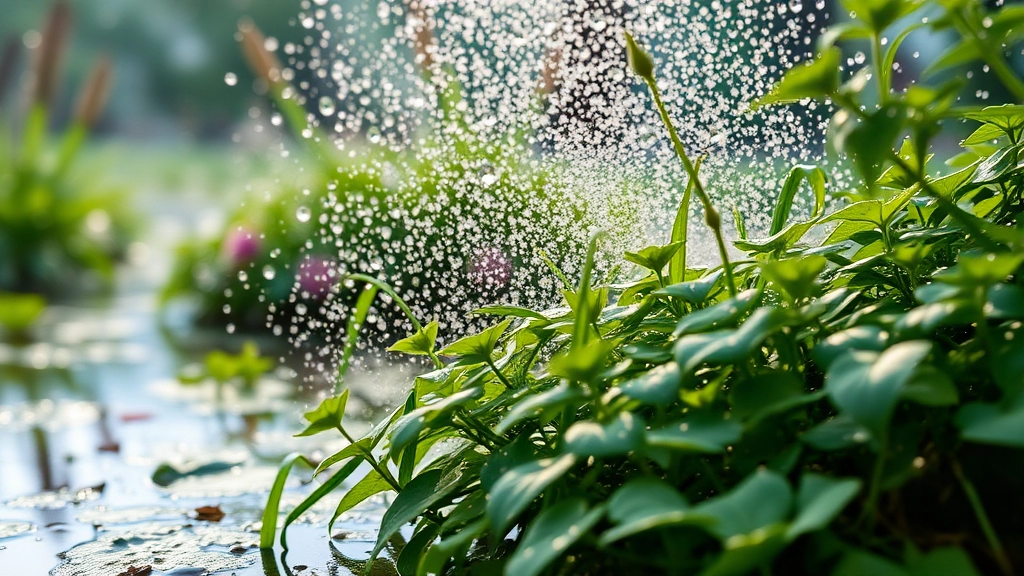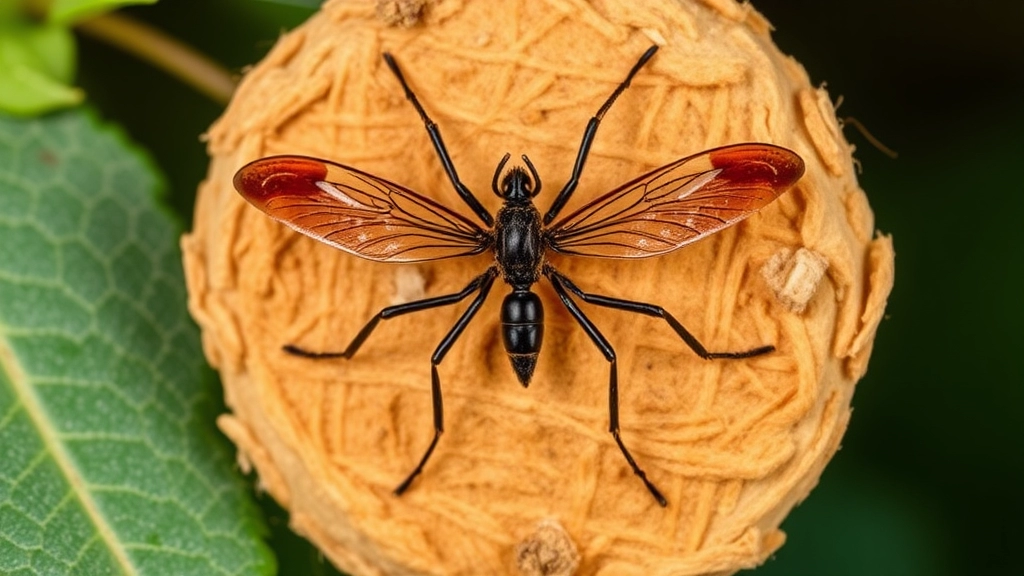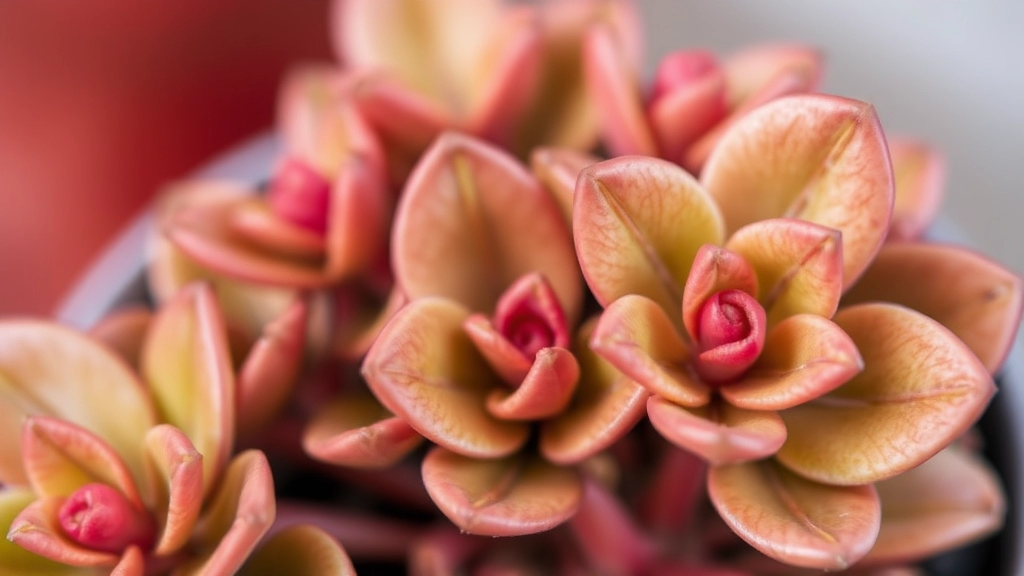Kalanchoe Plant Care: Addressing Brown Leaves
Ever noticed your Kalanchoe plant leaves turning brown? You’re not alone. This common issue can be a sign of several underlying problems. From overwatering to pest infestations, there are various reasons why your Kalanchoe might be struggling. Let’s dive into the primary causes and how you can address them to keep your plant healthy and vibrant.
Common Causes of Brown Leaves
One of the main culprits is improper watering. Both overwatering and underwatering can lead to brown leaves. Additionally, excessive sunlight can cause sunburn, while pests and nutrient deficiencies also play a role. Identifying the specific issue is key to finding the right solution.
Next Steps
Stay tuned as we explore these factors in more detail and provide practical tips to rejuvenate your Kalanchoe.
Common Causes of Brown Leaves on Kalanchoe Plants
Have you noticed brown leaves on your Kalanchoe plant? You’re not alone, and understanding the reasons behind this issue is crucial for keeping your plant healthy.
1. Overwatering
Overwatering is one of the most common culprits behind brown leaves. When the soil is too wet, the roots can suffocate and rot, leading to leaf discoloration.
- Signs of Overwatering:
- Yellowing leaves before browning
- Wilting despite wet soil
- Foul smell from the soil
2. Underwatering
On the flip side, underwatering can also cause brown leaves. If the soil dries out completely, the plant will struggle to absorb moisture.
- Signs of Underwatering:
- Dry, crispy leaves
- Leaf drop
- Soil pulling away from the pot edges
3. Sunburn and Excessive Sunlight
Kalanchoes thrive in bright light, but too much direct sunlight can lead to sunburn. Brown patches or crispy edges are indicators of this issue.
- Signs of Sunburn:
- Brown, crispy leaf tips
- Leaves turning pale or bleached
4. Pest Infestation
Pests such as aphids or mealybugs can wreak havoc on your Kalanchoe, causing brown leaves. For more information on how to handle this, check out our guide on causes and solutions for brown spots on Kalanchoe leaves.
- Signs of Pests:
- Sticky residue on leaves
- Visible insects or webs
5. Nutrient Deficiencies
Lack of essential nutrients can also result in browning leaves. A well-balanced fertiliser can help address this issue. For more tips on keeping your Kalanchoe healthy, visit our post-flowering care tips for Kalanchoe.
- Common Nutrients to Consider:
- Nitrogen
- Potassium
- Magnesium
Impact of Overwatering and Underwatering

Have you ever noticed your Kalanchoe’s leaves turning brown and wondered if you’re giving it too much love—or not enough?
Both overwatering and underwatering can wreak havoc on your beloved plant.
Overwatering: The Silent Killer
When you give your Kalanchoe too much water, it can lead to root rot. That’s when the roots start to decay, and trust me, it’s not pretty.
- Signs of Overwatering:
- Brown, mushy leaves
- Yellowing leaves
- A musty smell from the soil
To avoid this, make sure your pot has drainage holes. Let the soil dry out completely between waterings.
Underwatering: The Thirst Trap
On the flip side, underwatering can also cause those brown leaves. If you let your Kalanchoe go too long without water, it’ll start to show signs of stress.
- Signs of Underwatering:
- Crispy, dry leaves
- Leaf drop
- Soil pulling away from the pot edges
To keep your plant happy, water it when the top inch of soil feels dry.
Finding the Balance
So, how do you find that sweet spot? Here are a few tips:
- Check the Soil: Stick your finger in the soil. If it’s dry an inch down, it’s time to water.
- Use a Moisture Meter: If you’re really unsure, a moisture meter can take the guesswork out of watering.
- Observe Your Plant: Each Kalanchoe is unique. Pay attention to how it responds to your watering routine.
Have you noticed your Kalanchoe leaves turning brown and crispy? This could be a sign of sunburn or exposure to excessive sunlight.
Kalanchoe plants thrive in bright light but can suffer when exposed to harsh, direct sunlight for extended periods.
Here’s how to identify and remedy sunburn in your Kalanchoe:
– **Assess Sun Exposure:**
– Check where your plant is placed.
– Ideally, Kalanchoe prefers indirect sunlight.
– Morning sun is beneficial, but harsh afternoon rays can be damaging.
– **Adjust Placement:**
– Move your plant to a location with filtered light.
– A sheer curtain can soften direct sunlight if indoors.
– Outdoors, a spot with dappled shade works wonders.
– **Monitor Temperature:**
– Ensure that your Kalanchoe isn’t too close to a heat source.
– Sudden temperature changes can exacerbate sunburn.
– **Hydration Matters:**
– While sunburn is primarily about light, proper watering can help your plant cope.
– Ensure your Kalanchoe is adequately hydrated, as stressed plants are more susceptible to damage.
– **Prune Damaged Leaves:**
– If you notice severely sunburned leaves, prune them away.
– This helps the plant focus its energy on healthy growth.
For more tips on dealing with Kalanchoe issues, check out our guide on [why Kalanchoe leaves turn red](https://planthq.org/why-are-my-kalanchoe-leaves-turning-red-causes-solutions/) and learn about the [causes and fixes for brown Kalanchoe flowers](https://planthq.org/why-are-my-kalanchoe-flowers-turning-brown-causes-fixes/).
Identifying and Treating Pests

Have you noticed brown leaves on your Kalanchoe and suspected pests might be the culprit?
Pests can wreak havoc on your beloved plant, leading to unsightly damage and stress.
Common Pests Affecting Kalanchoe
- Mealybugs: These small, white, cotton-like insects often hide in leaf axils.
- Spider Mites: Tiny and often invisible to the naked eye, they leave fine webbing and cause stippling on leaves.
- Aphids: Small, green or black insects that cluster on new growth, sucking sap and weakening the plant.
Signs of Infestation
- Brown spots or patches on leaves.
- Sticky residue on leaves or surrounding surfaces (honeydew from aphids).
- Webbing on the plant (indicative of spider mites).
- Deformed leaves or stunted growth.
Treatment Options
- Manual Removal: For light infestations, wipe the affected leaves with a damp cloth or use a soft brush to dislodge pests.
- Insecticidal Soap: A safe and effective solution that targets soft-bodied insects. Spray it directly on the pests, ensuring thorough coverage.
- Neem Oil: This natural pesticide disrupts the life cycle of pests. Mix with water and spray on the affected areas.
- Diatomaceous Earth: A non-toxic powder that can be sprinkled on the soil and leaves, it helps to dehydrate and kill pests.
Prevention Tips
- Regular Inspections: Check your Kalanchoe weekly for any signs of pests.
- Quarantine New Plants: Always keep new plants separate for a couple of weeks to ensure they are pest-free before introducing them to your collection.
- Maintain Healthy Conditions: Healthy plants are less susceptible to pests. Ensure proper watering, light, and nutrition.
Have you noticed brown leaves on your Kalanchoe? Fungal infections might be to blame. These infections can lead to unsightly damage and even threaten the health of your plant.
Fungal infections typically thrive in warm, humid conditions. Common signs include:
– **Brown spots** on leaves
– **Wilting** or drooping leaves
– **Mould** or a fuzzy appearance on the soil surface
To keep your Kalanchoe safe from fungal infections, consider these preventive measures:
– **Watering Technique**: Water your plant at the base rather than from above. This reduces moisture on the leaves.
– **Air Circulation**: Ensure your plant has good airflow. Avoid overcrowding your plants.
– **Humidity Levels**: Keep humidity low; Kalanchoe prefers drier conditions.
– **Soil Choice**: Use well-draining soil to prevent waterlogging.
If you suspect a fungal infection, here’s how to tackle it:
1. **Remove Affected Leaves**: Trim away any brown or infected leaves to prevent the spread.
2. **Fungicidal Spray**: Use a suitable fungicide, following the instructions carefully.
3. **Repot if Necessary**: If the soil seems overly damp or mouldy, consider [repotting your Kalanchoe](https://planthq.org/how-to-plant-kalanchoe-in-a-pot-stepbystep-guide/) in fresh, dry soil.
For more detailed guidance on keeping your plants healthy, you can also learn about the [causes and solutions for Kalanchoe leaves curling](https://planthq.org/causes-and-solutions-for-kalanchoe-leaves-curling/).
Role of Nutrient Deficiencies in Leaf Browning

Ever looked at your Kalanchoe and thought, “Why are the leaves turning brown?”
You might be surprised to learn that nutrient deficiencies could be the culprit.
Plants, just like us, need a balanced diet to thrive. When they lack essential nutrients, it can lead to all sorts of issues, including those dreaded brown leaves.
Key Nutrients to Consider
- Nitrogen: This is crucial for healthy leaf growth. A nitrogen deficiency can cause older leaves to yellow and eventually brown.
- Potassium: Helps with water regulation and overall plant health. Without it, you might see browning at the leaf tips.
- Magnesium: Important for chlorophyll production. A lack of magnesium can lead to interveinal chlorosis, where the spaces between the veins turn yellow, leaving the veins green. Over time, this can lead to browning as well.
Signs of Nutrient Deficiencies
- Yellowing Leaves: Often the first sign of nutrient issues.
- Brown Tips or Edges: Look for crispy edges; this could indicate a potassium deficiency.
- Stunted Growth: If your Kalanchoe isn’t growing as it should, it might be craving some nutrients.
How to Fix It
- Fertilize: Use a balanced, water-soluble fertiliser every 4-6 weeks during the growing season. Look for one with micronutrients included.
- Soil Check: Sometimes, it’s the soil that’s lacking. Ensure you’re using a well-draining potting mix that retains some nutrients.
- Leaf Inspection: Regularly check your leaves. If you spot signs of deficiency, act fast!
As we explore the best practices for maintaining your Kalanchoe, it’s crucial to remember that proper watering and soil care can significantly impact the health of your plant and prevent brown leaves.
### Understanding Watering Needs
Kalanchoe plants thrive in well-draining soil and prefer to dry out between waterings. Here are some essential tips for effective watering:
– **Check Soil Moisture**: Before watering, stick your finger about an inch into the soil. If it feels dry, it’s time to water.
– **Watering Schedule**: During the growing season (spring and summer), water every 1-2 weeks. In the dormant season (fall and winter), reduce this to once every 2-3 weeks.
– **Watering Technique**: When you water, do so thoroughly until water drains from the bottom of the pot. This ensures the roots receive adequate moisture.
### Choosing the Right Soil
The right soil is equally important for your Kalanchoe’s health. Opt for:
– **Cactus Mix**: A commercial cactus or succulent mix provides excellent drainage.
– **DIY Soil Mix**: Create your own by combining regular potting soil with perlite or sand for improved aeration.
### Pot Considerations
Using the right pot can also make a difference:
– **Drainage Holes**: Always select pots with drainage holes to prevent water from pooling.
– **Material Matters**: Terracotta pots are great for succulents as they allow for moisture evaporation.
### Seasonal Adjustments
Adjust your care based on the seasons:
– **Summer**: Increase watering frequency if the weather is particularly hot.
– **Winter**: Cut back on watering to avoid root rot during the dormant period.
By implementing these best practices for watering and soil care, you can significantly reduce the risk of brown leaves and ensure your Kalanchoe thrives. For more detailed advice, check out our [complete care guide for Kalanchoe Flapjack](https://planthq.org/kalanchoe-flapjack-paddle-plant-care-propagation-tips/) and [proven tips to get your Kalanchoe to bloom again](https://planthq.org/proven-tips-to-get-your-kalanchoe-to-bloom-again/).
FAQs About Kalanchoe Plant Leaves Turning Brown
Why are my Kalanchoe plant leaves turning brown?
There could be several reasons for your Kalanchoe leaves turning brown, including overwatering, underwatering, pest infestations, or nutrient deficiencies.
How does overwatering affect my Kalanchoe plant?
Overwatering can lead to root rot, causing the roots to decay. Signs of overwatering include brown, mushy leaves, yellowing leaves, and a musty smell from the soil.
What are the signs of underwatering in a Kalanchoe plant?
Signs of underwatering include crispy, dry leaves, leaf drop, and soil pulling away from the pot edges.
How can I find the right balance between overwatering and underwatering?
To find the right balance, check the soil moisture by sticking your finger an inch deep into the soil. If it’s dry, it’s time to water. You can also use a moisture meter for more accurate readings.
What pests commonly affect Kalanchoe plants?
Common pests include mealybugs, spider mites, and aphids. These pests can cause brown spots, sticky residue, webbing, and deformed leaves.
How can I treat pest infestations on my Kalanchoe plant?
Treatment options include manual removal, using insecticidal soap, neem oil, and diatomaceous earth. Regular inspections and quarantining new plants can help prevent infestations.
Can nutrient deficiencies cause Kalanchoe leaves to turn brown?
Yes, nutrient deficiencies can lead to brown leaves. Key nutrients to watch for include nitrogen, potassium, and magnesium. Signs of deficiencies include yellowing leaves, brown tips or edges, and stunted growth.
How can I fix nutrient deficiencies in my Kalanchoe plant?
To fix nutrient deficiencies, use a balanced, water-soluble fertiliser every 4-6 weeks during the growing season. Ensure you’re using a well-draining potting mix that retains some nutrients and regularly inspect your leaves for signs of deficiency.
What should I do if I suspect my Kalanchoe plant has root rot?
If you suspect root rot, reduce watering immediately and ensure your pot has proper drainage. You may need to repot the plant in fresh, well-draining soil and trim away any affected roots.
How often should I water my Kalanchoe plant?
Water your Kalanchoe when the top inch of soil feels dry. The frequency can vary depending on the environment, so always check the soil moisture before watering.
References
-
Why Are My Kalanchoe Leaves Turning Brown?
-
How to Grow Kalanchoe Indoors
-
Kalanchoe: How to Grow and Care for Kalanchoe Plants
